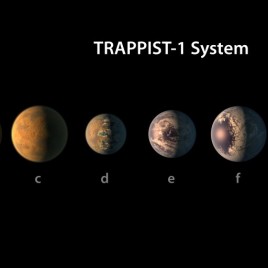A new rule which doesn’t presume the knowledge of climate or atmospheric data can accurately predict interglacial periods of the past million years. Over the past 1 million years, interglacials – or periods of warmth that occur between the glacial ones – have occurred approximately every 100,000 years. Researchers have developed a statistical model that accurately predicts each complete deglaciation of the past million years by using only the mean daily exposure to solar radiation in the summer half of the year at 65° N latitude, plus the time since the previous deglaciation. Study authors suggest that the increase in the deglaciation threshold, and therefore the less frequent interglacial periods, are responsible for the appearance of larger ice sheets over the past million years.
Authors:
P. C. Tzedakis, M. Crucifix, T. Mitsui & E. W. Wolff
Corresponding author:
Chronis Tzedakis, University College London, London, UK, Email: p.c.tzedakis@ucl.ac.uk, Tel: +44 207 6790 500
Original paper published in Nature on February 22, 2017.
